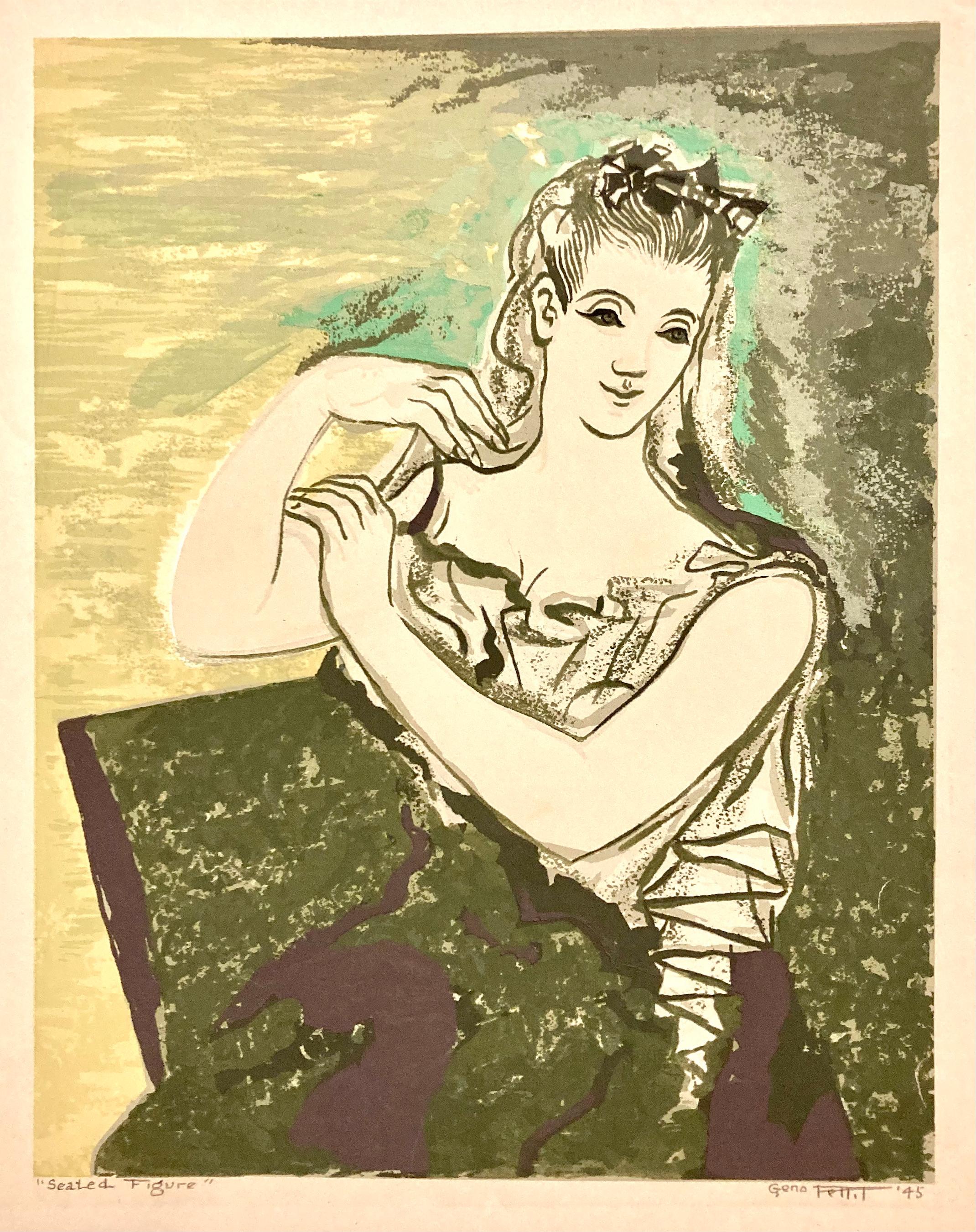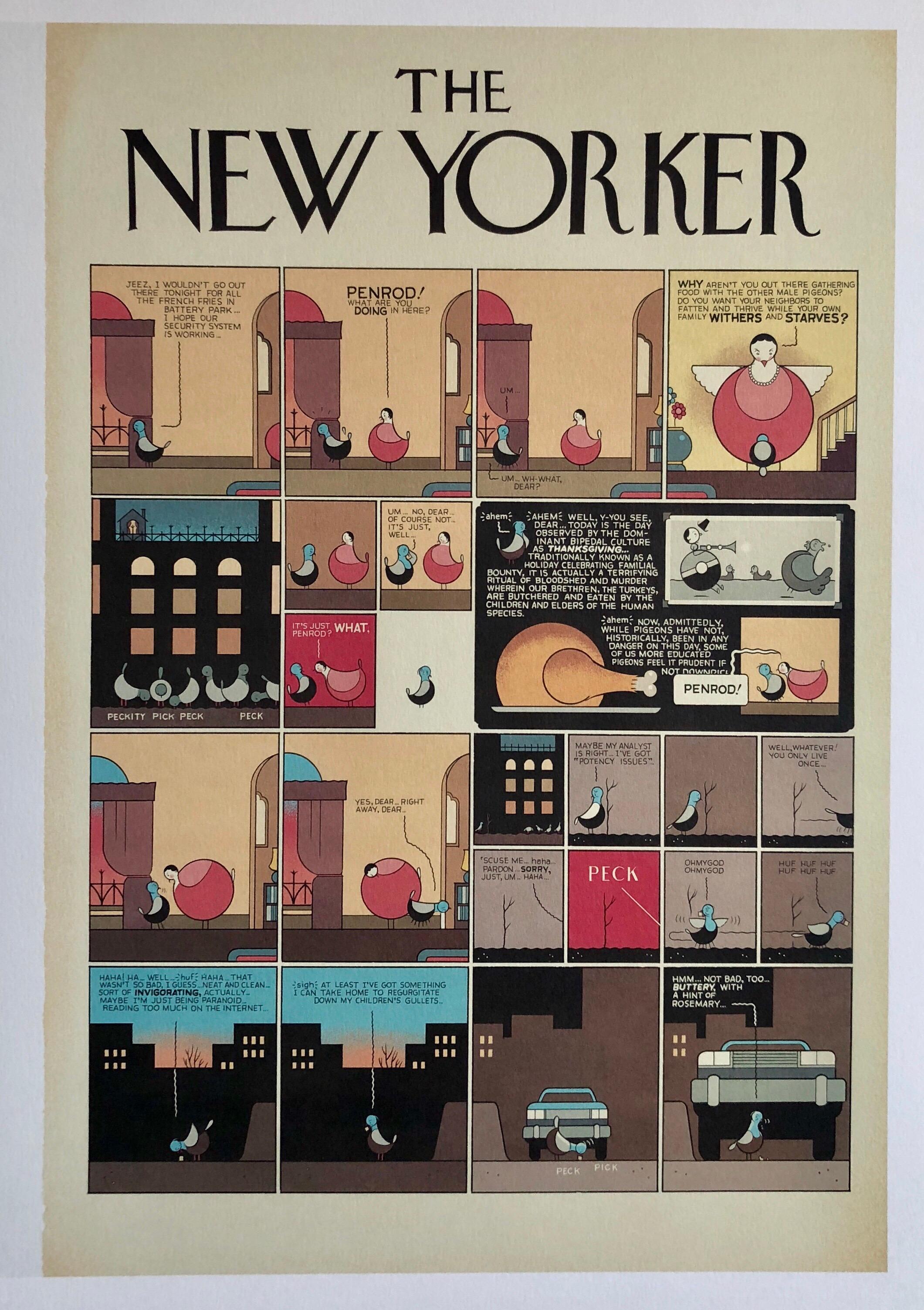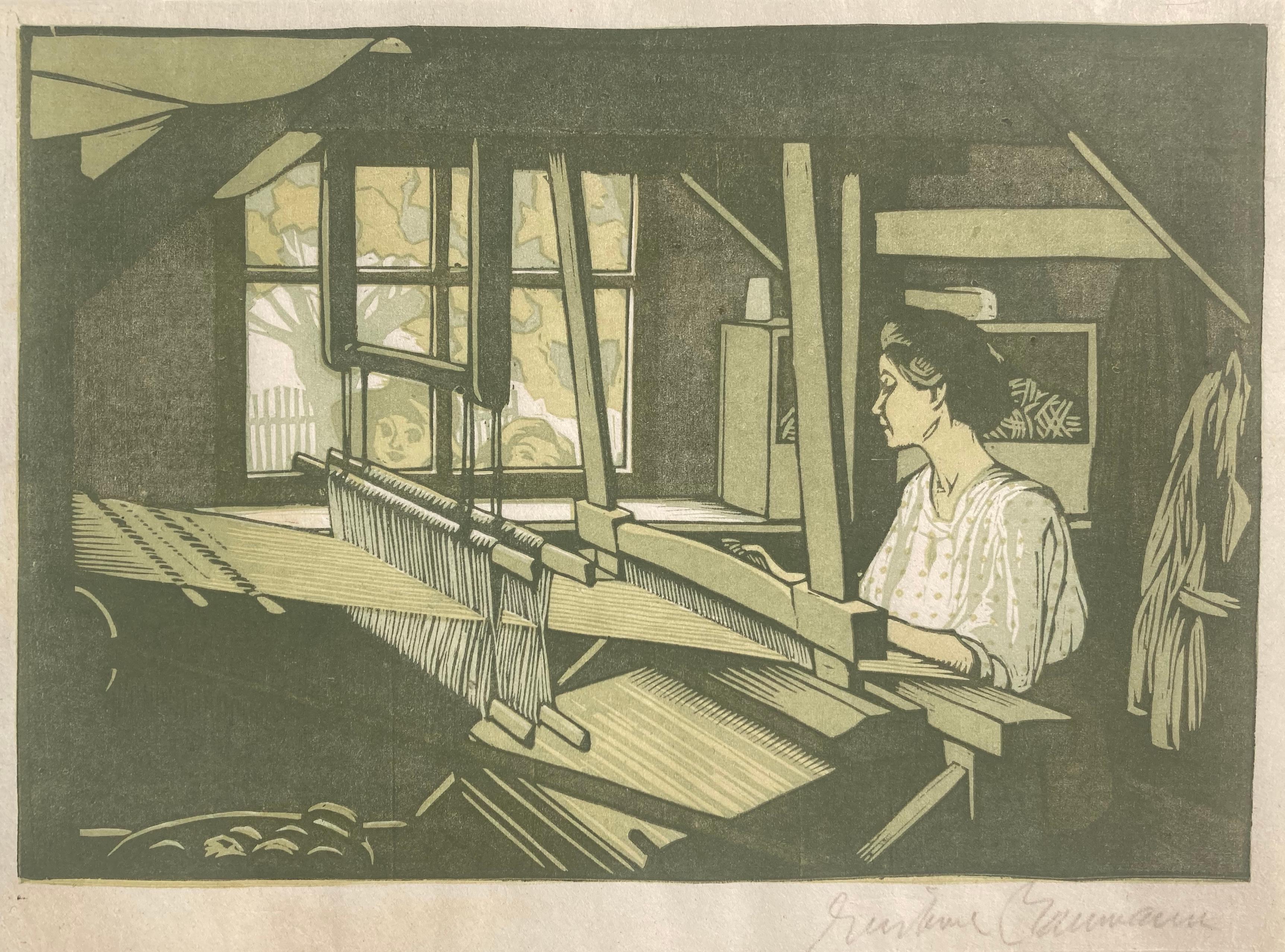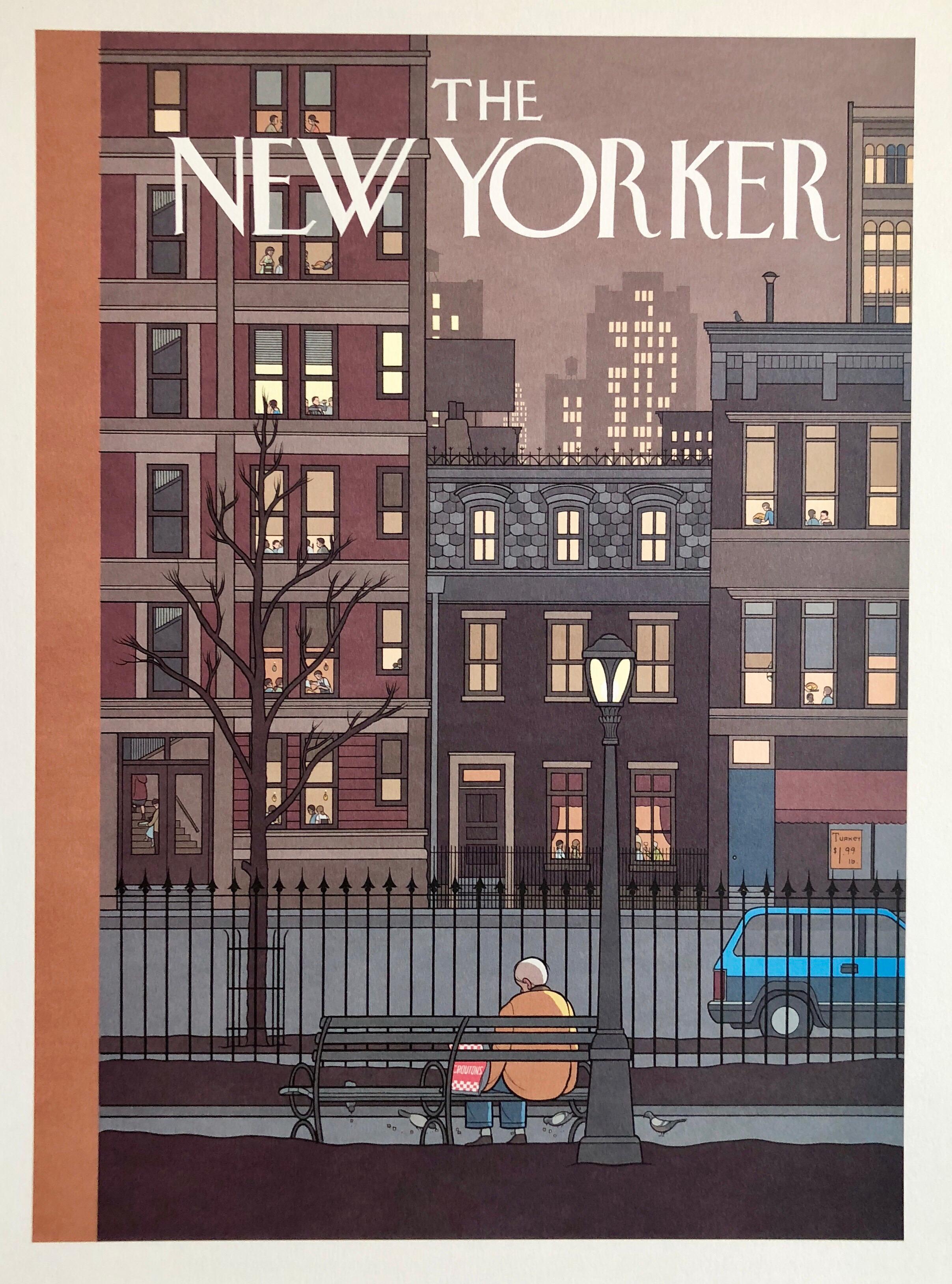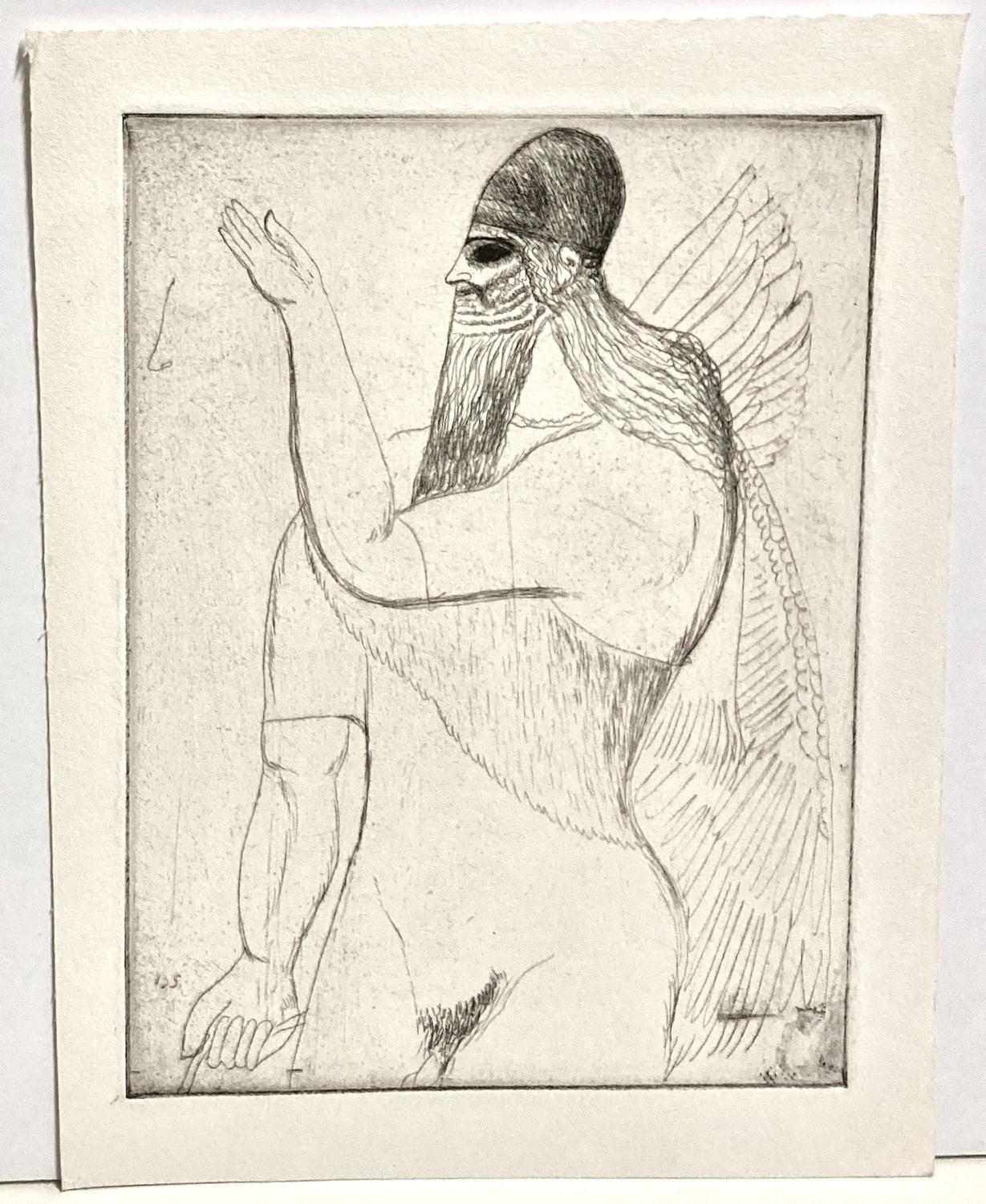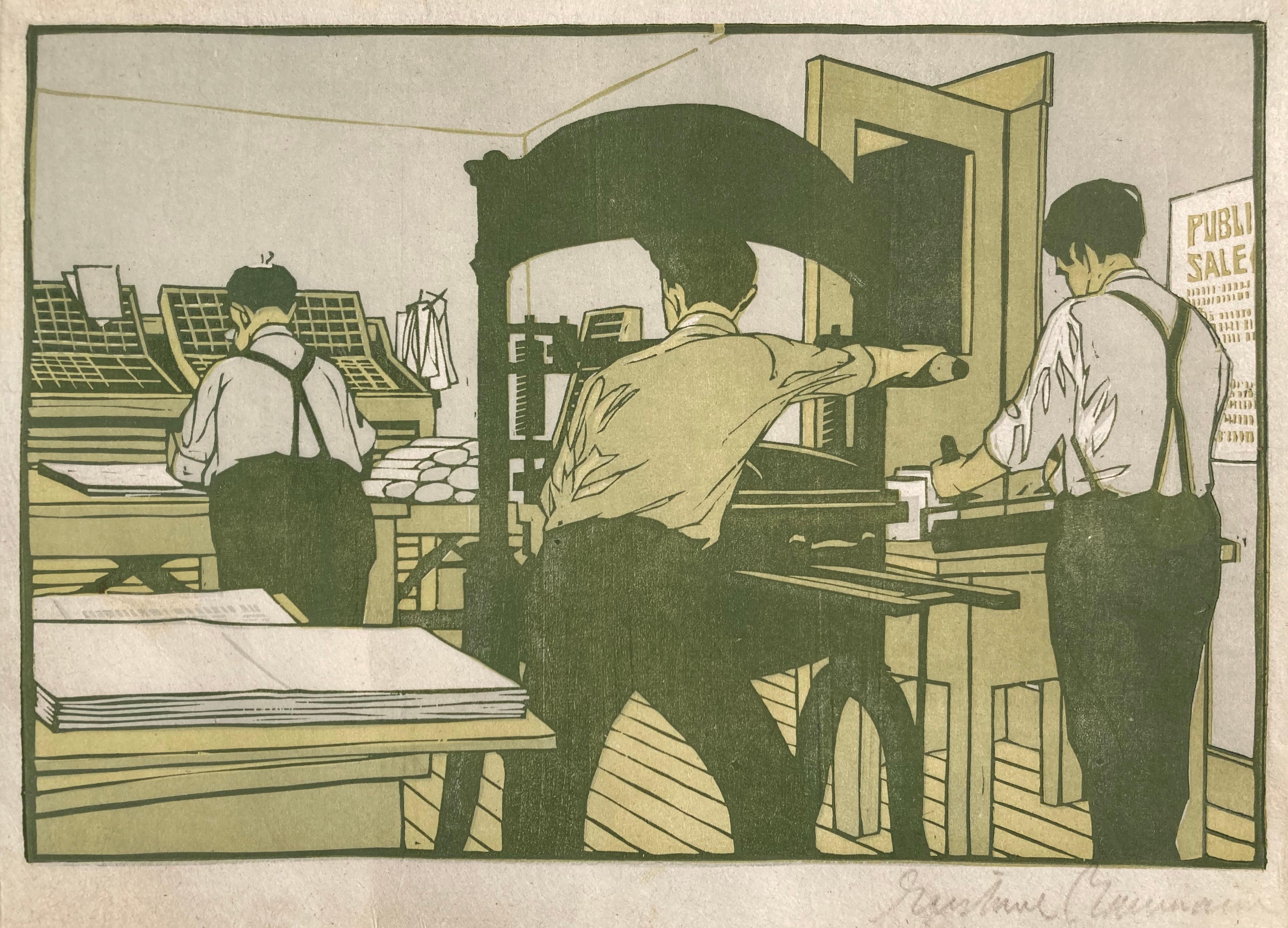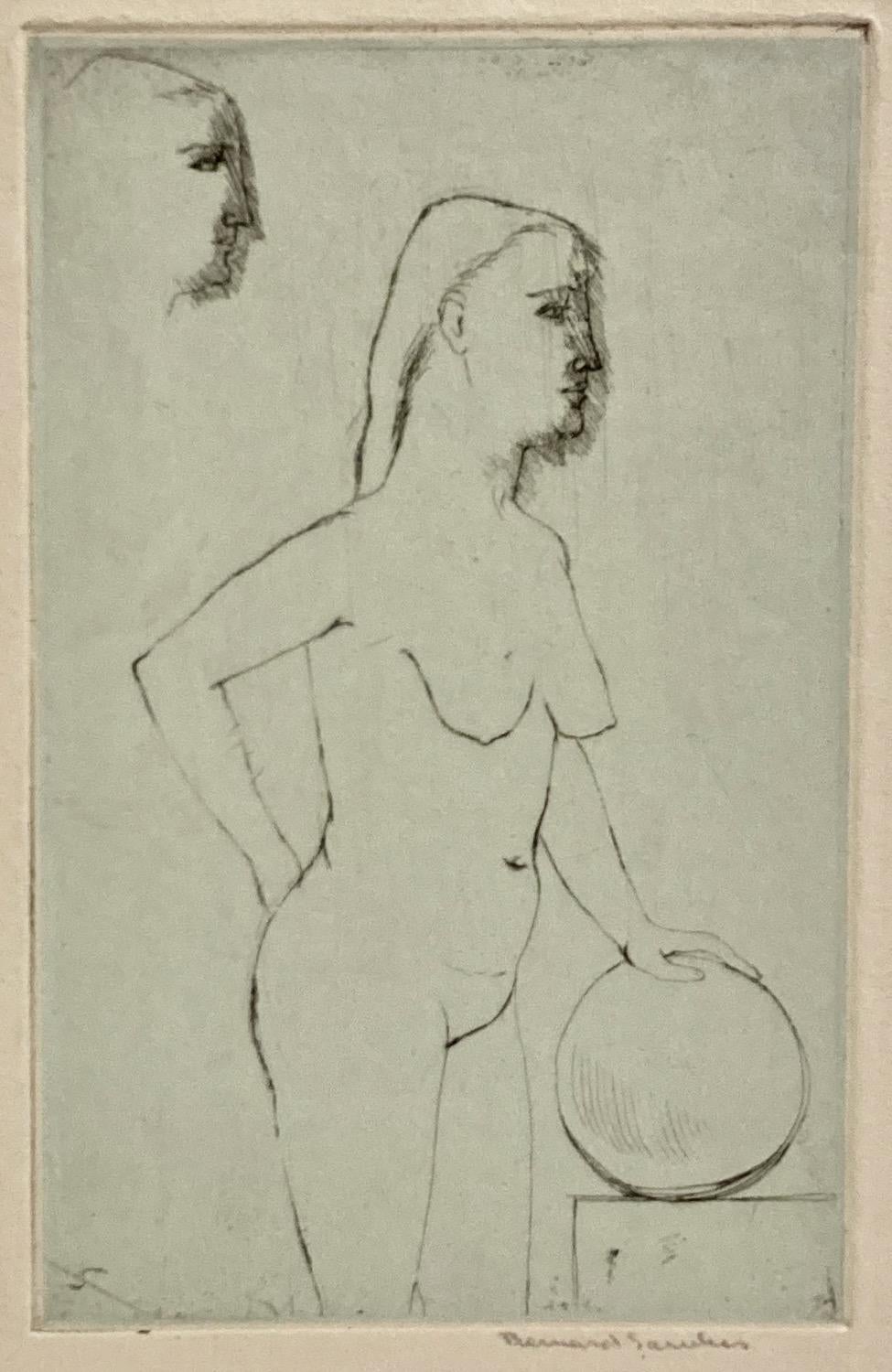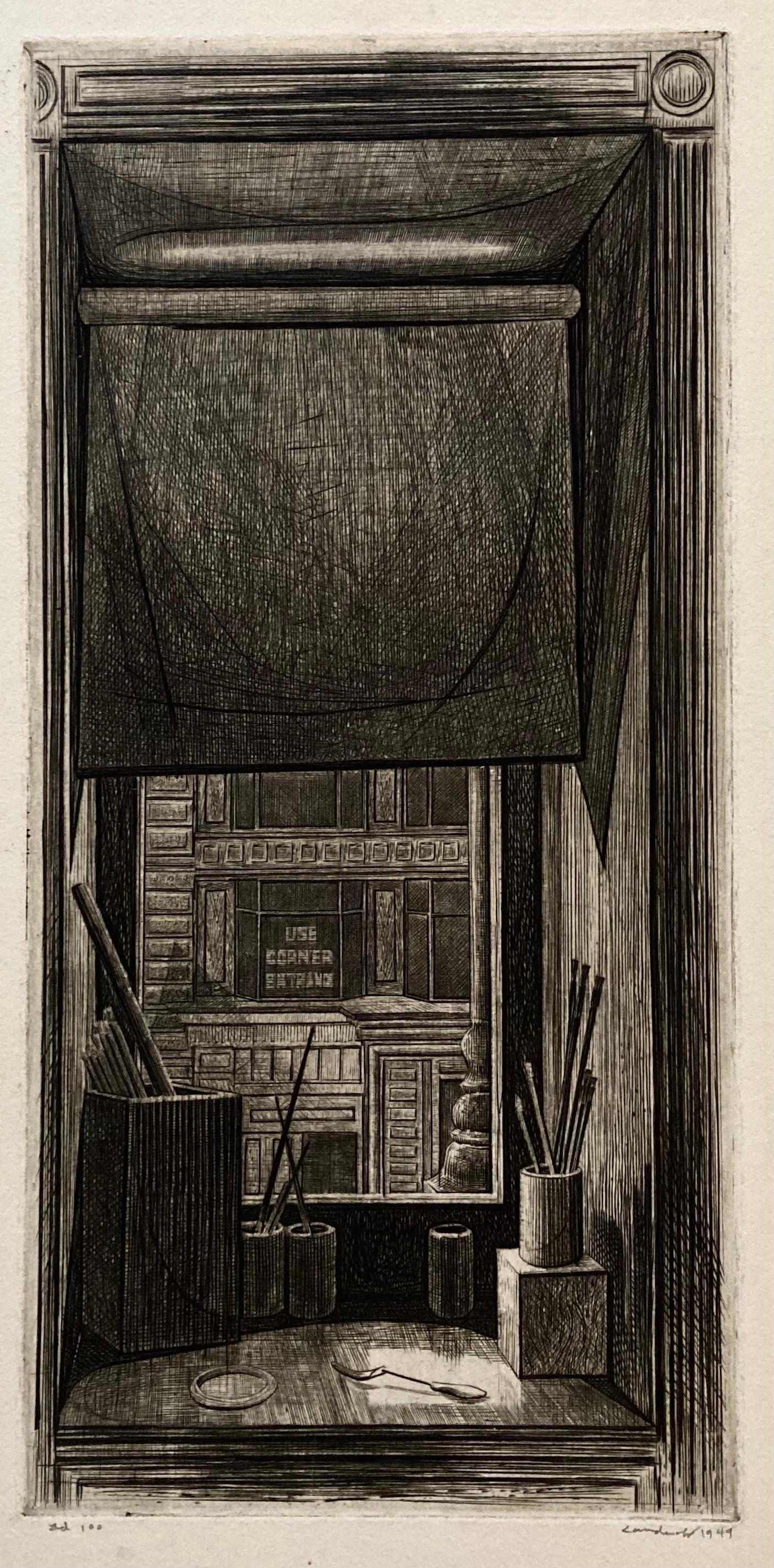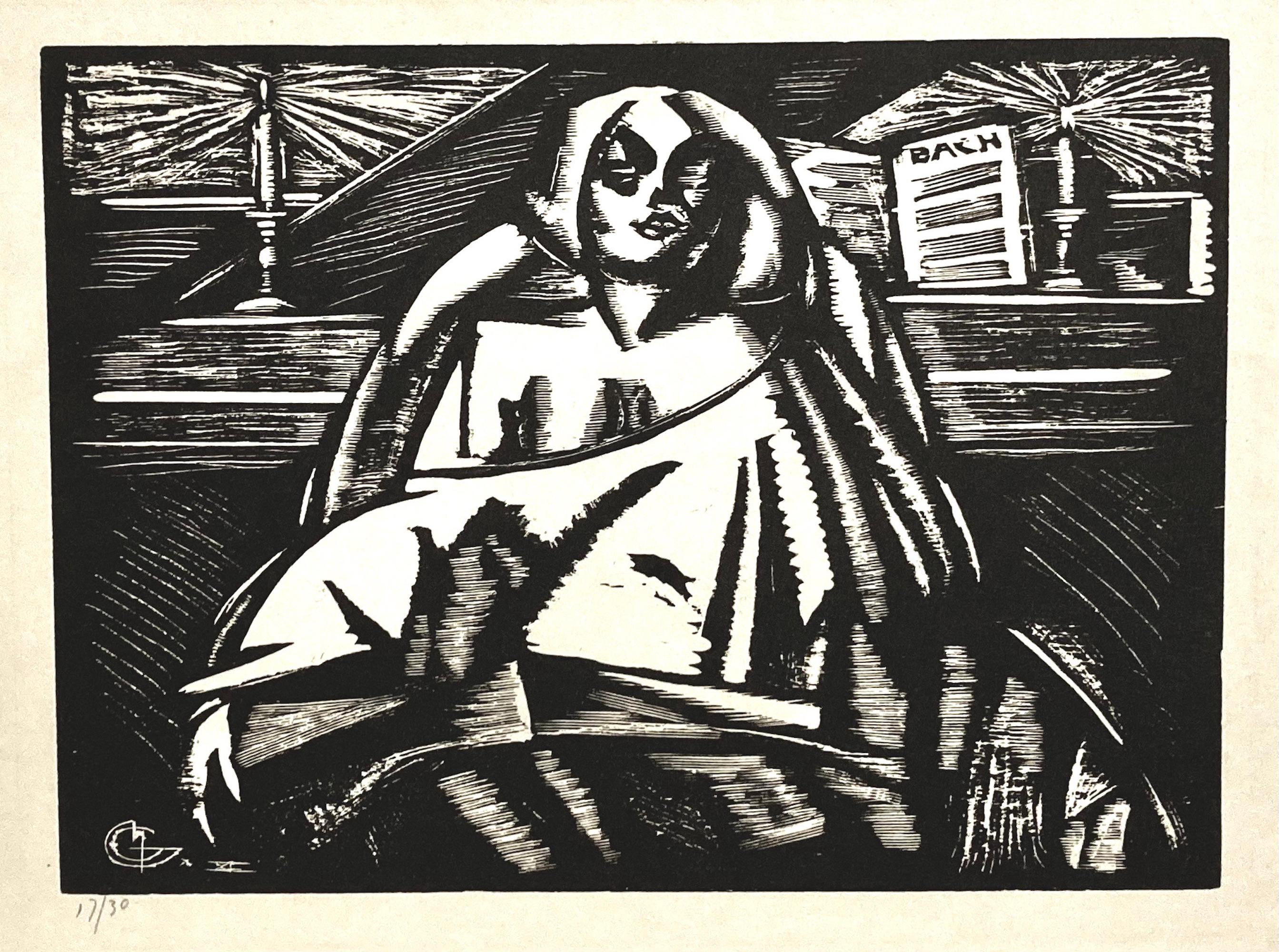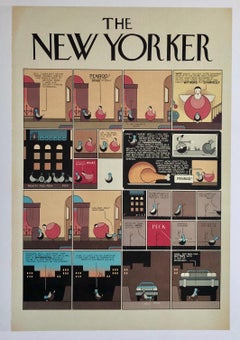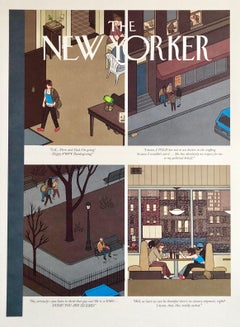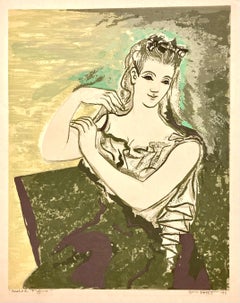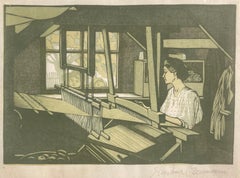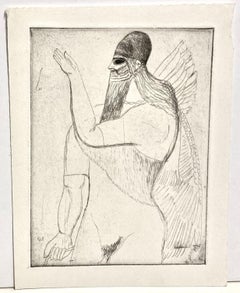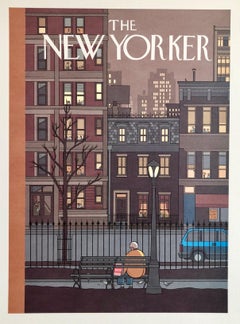
Chris Ware New Yorker Cartoonist Limited Edition Thanksgiving Print NYC
View Similar Items
Want more images or videos?
Request additional images or videos from the seller
1 of 11
Chris WareChris Ware New Yorker Cartoonist Limited Edition Thanksgiving Print NYC2006
2006
About the Item
- Creator:Chris Ware (1967)
- Creation Year:2006
- Dimensions:Height: 20 in (50.8 cm)Width: 15 in (38.1 cm)
- Movement & Style:
- Period:
- Condition:
- Gallery Location:Surfside, FL
- Reference Number:1stDibs: LU3823505691
About the Seller
4.9
Platinum Seller
These expertly vetted sellers are 1stDibs' most experienced sellers and are rated highest by our customers.
Established in 1995
1stDibs seller since 2014
1,539 sales on 1stDibs
Typical response time: 1 hour
More From This SellerView All
- Chris Ware New Yorker Cartoonist Limited Edition Thanksgiving Print NYCBy Chris WareLocated in Surfside, FLThis is one print – printed in full color on 15" x 20" heavy cream-colored paper. It is from a limited edition series of 175, the portfolio is hand numbered and hand signed by Chris Ware. the individual prints are not. The page with the hand signature is included here as a photo for reference only it is not included in this sale. Franklin Christenson "Chris" Ware (born December 28, 1967), is an American cartoonist known for his Acme Novelty Library series (begun 1994) and the graphic novel Jimmy Corrigan, the Smartest Kid on Earth (2000) and Building Stories (2012). His works explore themes of social isolation, emotional torment and depression. He tends to use a vivid color palette and realistic, meticulous detail. His lettering and images are often elaborate and sometimes evoke the ragtime era or another early 20th-century American design style. Ware often refers to himself in the publicity for his work in self-effacing, even withering tones. He is considered by some critics and fellow notable illustrators and writers, such as Dave Eggers, to be among the best currently working in the medium; Canadian graphic-novelist Seth has said, "Chris really changed the playing field. After him, a lot of [cartoonists] really started to scramble and go, 'Holy [expletive], I think I have to try harder.'" While still a sophomore at UT, Ware came to the attention of Art Spiegelman, who invited Ware to contribute to Raw, the influential anthology magazine Spiegelman was co-editing with Françoise Mouly. Ware has acknowledged that being included in Raw gave him confidence and inspired him to explore printing techniques and self-publishing. His Fantagraphics series Acme Novelty Library defied comics publishing conventions with every issue. Ware's art reflects early 20th-century American styles of cartooning and graphic design, shifting through formats from traditional comic panels to faux advertisements and cut-out toys. Stylistic influences include advertising graphics from that same era; newspaper strip cartoonists Winsor McCay (Little Nemo in Slumberland) and Frank King (Gasoline Alley); Charles Schulz's post-WWII strip Peanuts and the cover designs of ragtime-era sheet music. Ware has spoken about finding inspiration in the work of artist Joseph Cornell and cites Richard McGuire's strip Here as a major influence on his use of non-linear narratives. He is one of the great practitioners who have elevated the graphic novel style along with, Shepard Fairey, Ben Katchor and Robert Crumb. Quimby the Mouse was an early character for Ware and something of a breakthrough. Rendered in the style of an early animation character like Felix the Cat, Quimby the Mouse is perhaps Ware's most autobiographical character. Ware's Building Stories was serialized in a host of different venues. It first appeared as a monthly strip in Nest Magazine. Installments later appeared in a number of publications, including The New Yorker, Kramer's Ergot, and most notably, the Sunday New York Times Magazine. Building Stories appeared weekly in the New York Times Magazine from September 18, 2005 until April 16, 2006. A full chapter was published in Acme Novelty Library, number 18. Another installment was published under the title "Touch Sensitive" as a digital app released through McSweeneys. The entire narrative was published as a boxed set of books by Pantheon in October 2012. Ware was commissioned by Chip Kidd to design the inner machinations of the bird on the cover of Haruki Murakami's novel The Wind-Up Bird Chronicle. In 2011, Ware created the poster for the U.S. release of the 2010 Palme d'Or winning film Uncle Boonmee Who Can Recall His Past Lives by Thai director Apichatpong Weerasethakul. Awards and honors Over the years his work garnered several awards, including the 1999 National Cartoonists Society's Award for Best Comic Book for Acme Novelty Library and Award for Graphic Novel for Building Stories. Ware has won numerous Eisner Awards and multiple Harvey Awards. In 2002, Ware became the first comics artist to be invited to exhibit at Whitney Museum of American Art biennial exhibition. With Will Eisner, Jack Kirby, Harvey Kurtzman, Robert Crumb and Gary Panter, Ware was among the artists honored in the exhibition "Masters of American Comics" at the Jewish Museum in New York City, New York, from September 16, 2006 to January 28, 2007. His work was the subject of solo exhibitions at the Museum of Contemporary Art, Chicago in 2006 and at the University of Nebraska's Sheldon Museum of Art, in 2007. Many famous artists have done covers for the New Yorker Magazine including, Saul Steinberg, Maira Kalman, Art Spiegelman, Francoise Mouly, Charles Addams, Peter Arno, Roz Chast, Ed Koren...Category
Early 2000s American Modern Figurative Prints
MaterialsColor
- Chris Ware New Yorker Cartoonist Limited Edition Thanksgiving Print NYCBy Chris WareLocated in Surfside, FLThis is one print – printed in full color on 15" x 20" heavy cream-colored paper. It is from a limited edition series of 175, the portfolio is hand numbered and hand signed by Chris Ware. the individual prints are not. The page with the hand signature is included here as a photo for reference only it is not included in this sale. Franklin Christenson "Chris" Ware (born December 28, 1967), is an American cartoonist known for his Acme Novelty Library series (begun 1994) and the graphic novel Jimmy Corrigan, the Smartest Kid on Earth (2000) and Building Stories (2012). His works explore themes of social isolation, emotional torment and depression. He tends to use a vivid color palette and realistic, meticulous detail. His lettering and images are often elaborate and sometimes evoke the ragtime era or another early 20th-century American design style. Ware often refers to himself in the publicity for his work in self-effacing, even withering tones. He is considered by some critics and fellow notable illustrators and writers, such as Dave Eggers, to be among the best currently working in the medium; Canadian graphic-novelist Seth has said, "Chris really changed the playing field. After him, a lot of [cartoonists] really started to scramble and go, 'Holy [expletive], I think I have to try harder.'" While still a sophomore at UT, Ware came to the attention of Art Spiegelman, who invited Ware to contribute to Raw, the influential anthology magazine Spiegelman was co-editing with Françoise Mouly. Ware has acknowledged that being included in Raw gave him confidence and inspired him to explore printing techniques and self-publishing. His Fantagraphics series Acme Novelty Library defied comics publishing conventions with every issue. Ware's art reflects early 20th-century American styles of cartooning and graphic design, shifting through formats from traditional comic panels to faux advertisements and cut-out toys. Stylistic influences include advertising graphics from that same era; newspaper strip cartoonists Winsor McCay (Little Nemo in Slumberland) and Frank King (Gasoline Alley); Charles Schulz's post-WWII strip Peanuts and the cover designs of ragtime-era sheet music. Ware has spoken about finding inspiration in the work of artist Joseph Cornell and cites Richard McGuire's strip Here as a major influence on his use of non-linear narratives. He is one of the great practitioners who have elevated the graphic novel style along with, Shepard Fairey, Ben Katchor and Robert Crumb. Quimby the Mouse was an early character for Ware and something of a breakthrough. Rendered in the style of an early animation character like Felix the Cat, Quimby the Mouse is perhaps Ware's most autobiographical character. Ware's Building Stories was serialized in a host of different venues. It first appeared as a monthly strip in Nest Magazine. Installments later appeared in a number of publications, including The New Yorker, Kramer's Ergot, and most notably, the Sunday New York Times Magazine. Building Stories appeared weekly in the New York Times Magazine from September 18, 2005 until April 16, 2006. A full chapter was published in Acme Novelty Library, number 18. Another installment was published under the title "Touch Sensitive" as a digital app released through McSweeneys. The entire narrative was published as a boxed set of books by Pantheon in October 2012. Ware was commissioned by Chip Kidd to design the inner machinations of the bird on the cover of Haruki Murakami's novel The Wind-Up Bird Chronicle. In 2011, Ware created the poster for the U.S. release of the 2010 Palme d'Or winning film Uncle Boonmee Who Can Recall His Past Lives by Thai director Apichatpong Weerasethakul. Awards and honors Over the years his work garnered several awards, including the 1999 National Cartoonists Society's Award for Best Comic Book for Acme Novelty Library and Award for Graphic Novel for Building Stories. Ware has won numerous Eisner Awards and multiple Harvey Awards. In 2002, Ware became the first comics artist to be invited to exhibit at Whitney Museum of American Art biennial exhibition. With Will Eisner, Jack Kirby, Harvey Kurtzman, Robert Crumb and Gary Panter, Ware was among the artists honored in the exhibition "Masters of American Comics" at the Jewish Museum in New York City, New York, from September 16, 2006 to January 28, 2007. His work was the subject of solo exhibitions at the Museum of Contemporary Art, Chicago in 2006 and at the University of Nebraska's Sheldon Museum of Art, in 2007. Many famous artists have done covers for the New Yorker Magazine including, Saul Steinberg, Maira Kalman, Art Spiegelman, Francoise Mouly, Charles Addams, Peter Arno, Roz Chast, Ed Koren...Category
Early 2000s American Modern Figurative Prints
MaterialsColor
- Chris Ware New Yorker Cartoonist Limited Edition Thanksgiving Print NYCBy Chris WareLocated in Surfside, FLThis is one print – printed in full color on 15" x 20" heavy cream-colored paper. It is from a limited edition series of 175, the portfolio is hand numbered and hand signed by Chris Ware. the individual prints are not. The page with the hand signature is included here as a photo for reference only it is not included in this sale. Franklin Christenson "Chris" Ware (born December 28, 1967), is an American cartoonist known for his Acme Novelty Library series (begun 1994) and the graphic novel Jimmy Corrigan, the Smartest Kid on Earth (2000) and Building Stories (2012). His works explore themes of social isolation, emotional torment and depression. He tends to use a vivid color palette and realistic, meticulous detail. His lettering and images are often elaborate and sometimes evoke the ragtime era or another early 20th-century American design style. Ware often refers to himself in the publicity for his work in self-effacing, even withering tones. He is considered by some critics and fellow notable illustrators and writers, such as Dave Eggers, to be among the best currently working in the medium; Canadian graphic-novelist Seth has said, "Chris really changed the playing field. After him, a lot of [cartoonists] really started to scramble and go, 'Holy [expletive], I think I have to try harder.'" While still a sophomore at UT, Ware came to the attention of Art Spiegelman, who invited Ware to contribute to Raw, the influential anthology magazine Spiegelman was co-editing with Françoise Mouly. Ware has acknowledged that being included in Raw gave him confidence and inspired him to explore printing techniques and self-publishing. His Fantagraphics series Acme Novelty Library defied comics publishing conventions with every issue. Ware's art reflects early 20th-century American styles of cartooning and graphic design, shifting through formats from traditional comic panels to faux advertisements and cut-out toys. Stylistic influences include advertising graphics from that same era; newspaper strip cartoonists Winsor McCay (Little Nemo in Slumberland) and Frank King (Gasoline Alley); Charles Schulz's post-WWII strip Peanuts and the cover designs of ragtime-era sheet music. Ware has spoken about finding inspiration in the work of artist Joseph Cornell and cites Richard McGuire's strip Here as a major influence on his use of non-linear narratives. He is one of the great practitioners who have elevated the graphic novel style along with, Shepard Fairey, Ben Katchor and Robert Crumb. Quimby the Mouse was an early character for Ware and something of a breakthrough. Rendered in the style of an early animation character like Felix the Cat, Quimby the Mouse is perhaps Ware's most autobiographical character. Ware's Building Stories was serialized in a host of different venues. It first appeared as a monthly strip in Nest Magazine. Installments later appeared in a number of publications, including The New Yorker, Kramer's Ergot, and most notably, the Sunday New York Times Magazine. Building Stories appeared weekly in the New York Times Magazine from September 18, 2005 until April 16, 2006. A full chapter was published in Acme Novelty Library, number 18. Another installment was published under the title "Touch Sensitive" as a digital app released through McSweeneys. The entire narrative was published as a boxed set of books by Pantheon in October 2012. Ware was commissioned by Chip Kidd to design the inner machinations of the bird on the cover of Haruki Murakami's novel The Wind-Up Bird Chronicle. In 2011, Ware created the poster for the U.S. release of the 2010 Palme d'Or winning film Uncle Boonmee Who Can Recall His Past Lives by Thai director Apichatpong Weerasethakul. Awards and honors Over the years his work garnered several awards, including the 1999 National Cartoonists Society's Award for Best Comic Book for Acme Novelty Library and Award for Graphic Novel for Building Stories. Ware has won numerous Eisner Awards and multiple Harvey Awards. In 2002, Ware became the first comics artist to be invited to exhibit at Whitney Museum of American Art biennial exhibition. With Will Eisner, Jack Kirby, Harvey Kurtzman, Robert Crumb and Gary Panter, Ware was among the artists honored in the exhibition "Masters of American Comics" at the Jewish Museum in New York City, New York, from September 16, 2006 to January 28, 2007. His work was the subject of solo exhibitions at the Museum of Contemporary Art, Chicago in 2006 and at the University of Nebraska's Sheldon Museum of Art, in 2007. Many famous artists have done covers for the New Yorker Magazine including, Saul Steinberg, Maira Kalman, Art Spiegelman, Francoise Mouly, Charles Addams, Peter Arno, Roz Chast, Ed Koren...Category
Early 2000s American Modern Figurative Prints
MaterialsColor
- 1936 Lithograph Interregnum Portfolio Windblown Man Small Edition Weimar GermanyBy George GroszLocated in Surfside, FLHand lithography on BFK Rives French hand moulded paper Style: German New Objectivity (Neue Sachlichkeit) According to the frontis these were produced by Hand Lithography. According...Category
1930s Modern Interior Prints
MaterialsLithograph
- 1936 Lithograph Interregnum, Cigar, Kid w Toy Gun, Small Edition Weimar GermanyBy George GroszLocated in Surfside, FLHand lithography on BFK Rives French hand moulded paper Style: German New Objectivity (Neue Sachlichkeit) According to the frontis these were produced by Hand Lithography. According...Category
1930s Modern Interior Prints
MaterialsLithograph
- 1936 Lithograph Interregnum Portfolio Butcher Shop Small Edition Weimar GermanyBy George GroszLocated in Surfside, FLHand lithography on BFK Rives French hand moulded paper Style: German New Objectivity (Neue Sachlichkeit) According to the frontis these were produced by Hand Lithography. According...Category
1930s Modern Interior Prints
MaterialsLithograph
You May Also Like
- Geno Pettit, Seated FigureLocated in New York, NYSeated Figure by Geno (sometimes Genoi) Pettit, made in 1945, is a wonderfully 'moderne' image. The woman is wearing a roman-inspired blouse or dress and is shown against a yellow/green, chartreuse background. There is the feeling she is about to lead an ancient procession at any moment! Pettit and her husband, Guy McCoy...Category
Mid-20th Century American Modern Figurative Prints
MaterialsScreen
- THE RUG WEAVERBy Gustave BaumannLocated in Santa Monica, CAGUSTAVE BAUMANN (1881 – 1971) THE RUG WEAVER, 1910 (Chamberlain 26) Color woodcut signed in pencil. Unnumbed from an edition 100 as published in the Hills o’ Brown...Category
1910s American Modern Figurative Prints
MaterialsWoodcut
- Bernard Sanders, (Mesopotamian Figure)Located in New York, NYClearly Sanders was looking at ancient Mesopotamian figures. Even the elaborate feathered wings can be found there -- made about 5000 years ago! There's an initial 'S' in the plate...Category
Early 20th Century American Modern Interior Prints
MaterialsEtching, Drypoint
- Bernard Sanders, (Lovers)Located in New York, NYClearly Sanders (1906-1967) was a master at these minimalist figurative prints. It's all about atmosphere and tension. Perhaps reflecting the print here, (Lovers), he, in fact, w...Category
Early 20th Century American Modern Interior Prints
MaterialsEtching, Drypoint
- The Print ShopBy Gustave BaumannLocated in Santa Monica, CAGUSTAVE BAUMANN (1881 – 1971) THE PRINT SHOP 1910 (Chamberlain 27) Color woodcut signed in pencil. Unnumbed from an edition 100 as published in the Hills o’ Brown Portfolio, (plate 11 of 12). Image 9 x 13 1/8, sheet 10 ¼ x 13 7/8 with deckle edge at the bottom. The print portrays the Brown County...Category
1910s American Modern Interior Prints
MaterialsLithograph
- Bernard Sanders, (Nude Woman with Orb)Located in New York, NYSander's figures are captivating. Here a women stands facing right, just touching, and holding still, a globe shape, on a flat surface. It was difficult getting the color to show p...Category
Early 20th Century American Modern Interior Prints
MaterialsDrypoint, Etching
